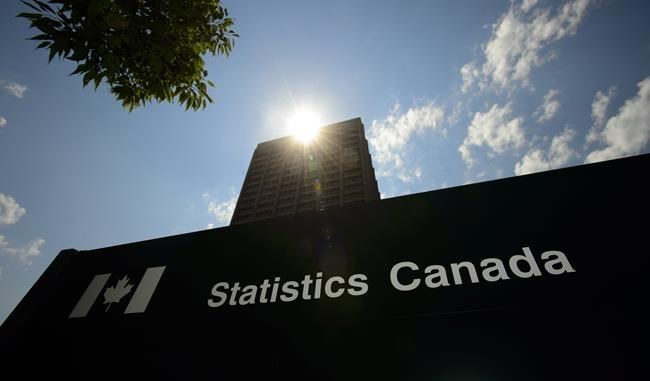OTTAWA — The annual pace of inflation jumped higher in March due in large part to a plunge in prices a year ago at the start of the pandemic.
Statistics Canada said Wednesday the consumer price index in March was up 2.2 per cent compared with a year ago.
The increase compared with a 1.1 per cent year-over-year increase in February, which was then a pandemic-era high.
The figures for March marked a new high, but one that saw prices compared against a year ago when the first wave of COVID-19 crashed on Canada's shores.
March gas prices, for example, were up 35.3 per cent compared with the same month last year when prices reached a four-year low at the onset of the pandemic.
Statistics Canada said about one-fifth of the increase in gasoline prices was due to the comparison with prices in March 2020.
Excluding energy prices, headline inflation would have been softer, clocking in at 1.1 per cent year-over-year.
"For many Canadians, inflation doesn't feel quite as weak as the news would suggest," wrote TD senior economist James Marple.
"Canadians have shifted consumption toward shelter, which has been increasing in price, and away from clothing and recreation, which has fallen."
The effect for gasoline should translate over into other areas of the index. The statistics agency said that when there are large drops in prices in the year-ago period, as was seen at the onset of the pandemic, it can push up headline inflation in the current month.
In its report on the consumer price index Wednesday, the agency said this effect should continue for the next few months.
CIBC senior economist Royce Mendes said it's likely that the inflation reading for April will touch three per cent when prices are compared with weak levels seen during the worst of the pandemic.
"Given the fact that the surge in headline inflation is simply due to base effects, the Bank of Canada will look through the recent acceleration and continue to focus on the support still needed for the labour market," he wrote in a note.
Statistics Canada said the average of Canada's three measures for core inflation, which are considered better gauges of underlying price pressures and closely tracked by the Bank of Canada, was 1.93 per cent for March.
That’s the highest the average has been since it had the same reading in January 2020.
The Bank of Canada targets an inflation rate of two per cent and on Wednesday kept its key interest rate at 0.25 per cent until the economy is back on its feet and inflation back on target.
In a statement, the bank's governing council said it expects inflation to hover near the top of its target rage in the near-term, but will fall back down to two-per-cent over the second half of the year as the base-year effects roll off.
The central bank is now forecasting inflation to sustainably get back on its two-per-cent target some time in the second half of 2022.
Last month, mortgage interest costs declined 6.3 per cent year-over-year, Statistics Canada says, as rates have dropped on the back of the central bank’s actions.
Statistics Canada said homeowner replacement costs, which are linked to the price of new homes, rose 7.9 per cent between March 2020 and last month, marking the largest yearly increase since December 2006 when it was 8.2 per cent.
As well, food prices were up 11.4 per cent year-over-year in March, Statistics Canada said.
This report by The Canadian Press was first published April 21, 2021.
Jordan Press, The Canadian Press



